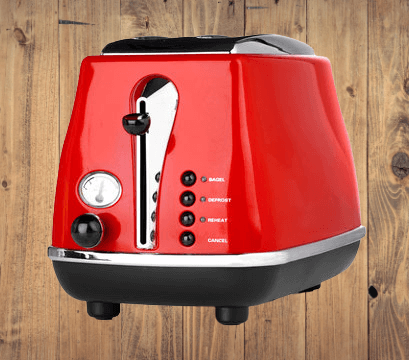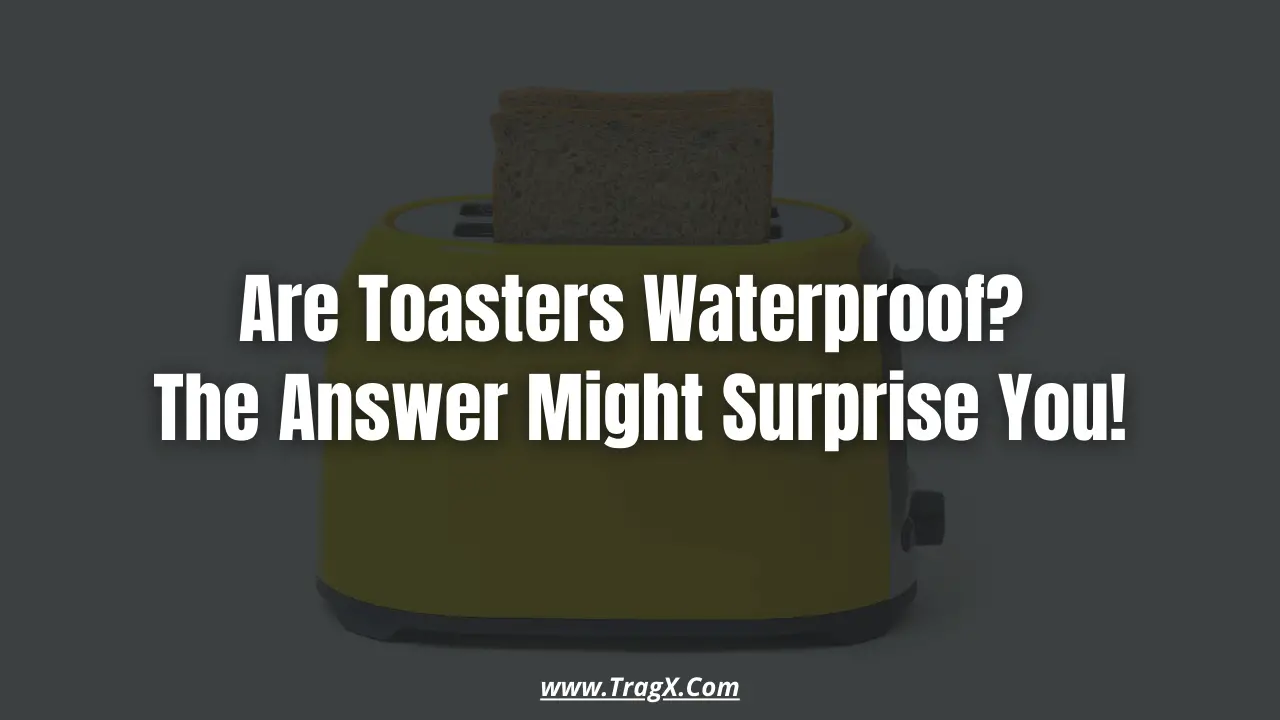When it comes to kitchen appliances, toasters are a staple for many households. They provide a quick and convenient way to toast bread and other baked goods to perfection. However, one question that often arises is whether toasters are waterproof. Can they withstand exposure to water without compromising safety?
In this article, we will explore the topic of toaster waterproofing to understand the safety features, water resistance, and precautions associated with using toasters. Understanding these aspects will help you use your toaster responsibly and ensure a safe and enjoyable toasting experience in the kitchen.
What is a Toaster?

A toaster is a kitchen appliance designed explicitly for toasting bread slices or other baked goods. It typically consists of a small enclosure with slots where the bread is placed. Inside the toaster, there are heating elements that generate heat to toast the bread. When the toaster is turned on, the heating elements warm up, and the bread is placed in the slots.
As the bread is exposed to heat, it undergoes a chemical reaction known as the Maillard reaction, resulting in a golden-brown and crispy texture. Toasters may also feature adjustable settings for desired browning levels, as well as additional functions like defrosting or reheating. They are a popular and convenient appliance for breakfast and snack preparations in households around the world.
See Also:- Cusimax 2-Slice Toaster Review
How do Toasters Work?
Toasters work by utilizing heating elements to generate heat and toast bread slices or other baked goods. Here’s a step-by-step explanation of how toasters operate:
Bread Placement: The user places the bread slices into the slots on the top of the toaster. Some toasters have two slots for two slices, while others may have more slots.
Heating Elements: Inside the toaster, there are heating elements made of nichrome wire, which has a high electrical resistance and can generate a significant amount of heat when an electric current passes through it.
Electric Current: When the toaster is turned on by the user, an electric current flows through the heating elements, causing them to heat up rapidly.
Heat Radiation: As the heating elements reach the desired temperature, they radiate heat into the surrounding space within the toaster.
Toasting Process: The user selects the desired browning level by adjusting the toaster’s settings. These settings control the duration of the toasting process.
Timing Mechanism: The toaster is equipped with a timing mechanism, typically controlled by a thermostat. It determines the duration of the toasting process based on the selected setting.
Toasting Completion: Once the set time elapses, the timing mechanism triggers the automatic shut-off of the heating elements. This prevents over-toasting or burning of the bread.
Pop-Up Mechanism: After the toasting process is complete, many toasters have a pop-up mechanism that raises the toasted bread slices above the slots for easy retrieval. This mechanism is typically activated by a spring-loaded lever or a sensor.
Enjoying Toast: The user can now safely remove the toasted bread slices from the toaster. They should be careful as the slices will be hot.
It’s important to note that different toasters may have additional features such as defrosting or reheating functions, which modify the toasting process accordingly. Overall, toasters provide a convenient and efficient way to enjoy delicious toasted bread in a matter of minutes.
Are Toasters Waterproof?
No, toasters are not designed to be waterproof. They are electrical appliances that involve the use of heat-generating elements and electrical components. Water and electricity are a dangerous combination, and the presence of water can pose significant risks when using a toaster.
While toasters do incorporate certain measures to provide a degree of water resistance, such as insulation and protective enclosures, they are not fully waterproof. The heating elements, electrical wiring, and other internal components of a toaster can be damaged if they come into contact with water. Water can cause short circuits, electrical shocks, or even fires, which can be hazardous to users and can damage the toaster.
Therefore, it is important to keep toasters away from water sources, such as sinks or wet countertops. Accidental spills or splashes should be avoided to prevent any water from reaching the toaster. It is also crucial to ensure that the toaster is completely dry before using it.
Additionally, it is worth noting that toaster designs and specifications may vary among different brands and models. Therefore, it is always advisable to refer to the manufacturer’s instructions and guidelines regarding the safe usage and maintenance of your specific toaster model.
Best 4-Slice Toaster To Buy:- Breville Bit More 4 Slice Toaster Reviews
Tips for Maintaining Your Toaster
Proper maintenance of your toaster is essential to ensure its optimal performance, longevity, and safety. Here are some tips to help you maintain your toaster effectively:
Regular Cleaning: Regularly clean your toaster to remove crumbs and debris that accumulate during the toasting process. Use a soft brush or a damp cloth to wipe the interior and exterior surfaces. Be gentle and avoid using abrasive cleaners or submerging the toaster in the water.
Crumb Tray Maintenance: Many toasters come with removable crumb trays located at the bottom. Empty the crumb tray regularly to prevent the accumulation of crumbs, which can become a fire hazard. Clean the crumb tray with warm, soapy water and dry it thoroughly before reinserting it into the toaster.
Check for Wear and Tear: Periodically inspect your toaster for any signs of wear and tear, including frayed cords, loose connections, or damaged heating elements. If you notice any issues, immediately unplug the toaster and have it repaired by a professional, or contact the manufacturer for guidance.
Avoid Overloading: To ensure even toasting and prevent strain on the toaster’s heating elements, avoid overloading the toaster with bread slices that are too thick or too wide for the slots. Follow the manufacturer’s instructions regarding the maximum number of slices and the recommended sizes for optimal performance.
Unplug when not in use: When the toaster is not in use, unplug it from the power outlet. This conserves energy and eliminates the risk of accidental activation or electrical hazards.
Safe Storage: Store your toaster in a clean, dry, and well-ventilated area when not in use. Avoid exposing it to extreme temperatures, moisture, or direct sunlight, as these can adversely affect its performance and longevity.
Follow Manufacturer’s Instructions: Always refer to the user manual or any specific instructions provided by the manufacturer for your particular toaster model. These guidelines may include additional maintenance tips or specific care instructions tailored to your toaster’s design and features.
By following these maintenance tips, you can keep your toaster in good working condition and reduce the risk of malfunctions or safety hazards. Remember to prioritize safety and consult a professional if you have any concerns or issues with your toaster.
FAQ’s
Ans – No, toasters are not designed to be submerged in water. Water can damage the internal electrical components and pose safety risks. Instead, unplug the toaster, allow it to cool down, and use a damp cloth or brush to clean the exterior.
Ans – While toasters incorporate some degree of water resistance, they are not fully waterproof. The exterior surfaces are designed to repel water, and measures are taken to protect the internal components from moisture. However, it is important to keep the toaster away from water sources and avoid any contact with liquids.
Ans – No, it is not recommended to clean the interior of the toaster with a wet cloth. Water can seep into the electrical components and cause damage. Instead, use a soft brush or dry cloth to remove crumbs and debris from the interior.
Ans – If your toaster comes into contact with water or any liquid, immediately unplug it from the power source. Do not attempt to use the toaster until you are certain it is completely dry to avoid the risk of electrical hazards.
Ans – Yes, it is important to keep your toaster away from sinks, wet countertops, or any area where it may come into contact with water. Avoid using the toaster with wet hands or placing wet objects near the toaster. Water and electricity do not mix well, so it is crucial to exercise caution to prevent accidents.
You may also like this!
- Are Toaster Ovens Better than Toasters?
- How Toaster Works?
- How to Clean a Toaster in 4 Easy Steps
- Are 4 Slice Toaster Worth It?
Conclusion
In conclusion, toasters are not waterproof appliances. While they may incorporate certain measures of water resistance, such as insulation and protective enclosures, they are not designed to be submerged in water or exposed to excessive moisture. It is crucial to keep toasters away from water sources and to follow proper cleaning and usage guidelines to ensure safety and maintain the longevity of the appliance.
Always prioritize caution and consult the manufacturer’s instructions for specific information regarding your toaster’s water resistance capabilities and recommended maintenance practices.

